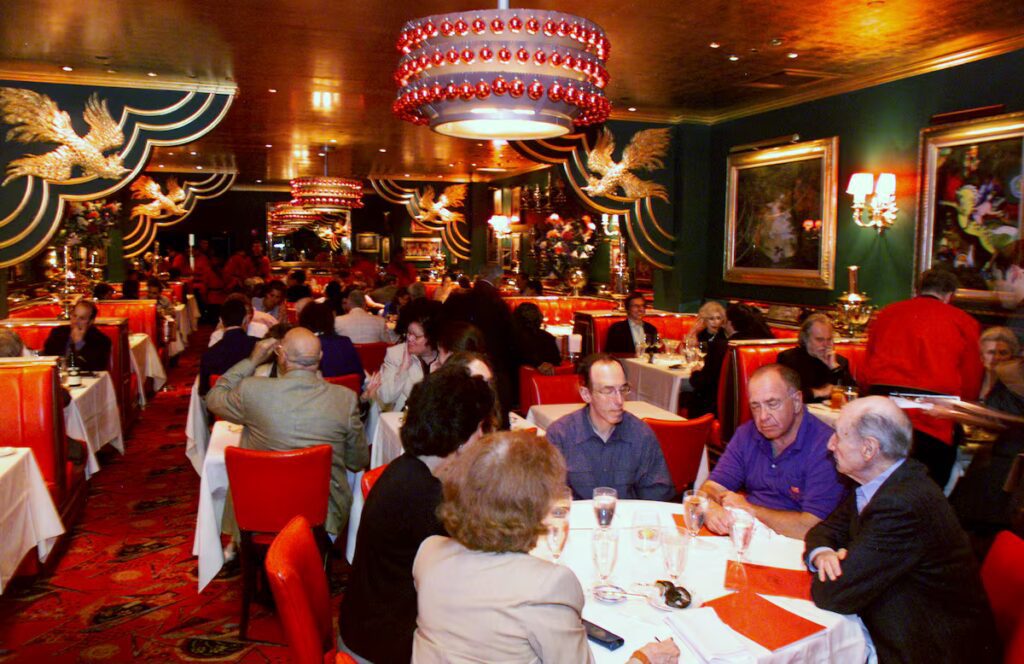Table of Contents
ToggleThe Legendary Russian Tea Room: A New York Icon
The Russian Tea Room stands as one of New York City's most legendary establishments, steeped in a rich tapestry of history and stories. From urban legends to celebrity encounters, the restaurant has become an integral part of the city's cultural landscape. Did Madonna really get fired after just two weeks working in the coat check? It seems plausible. Did Leonard Bernstein compose parts of his celebrated Fancy Free on a napkin within these walls? Likely. Rumor has it that Zero Mostel once served food while wearing an apron, and even whispers of the ghost of Anastasia, daughter of Tsar Nicholas II, lingering during renovations have circulated. However, we can confirm the existence of a large rotating polar bear-shaped aquarium, a tree adorned with Fabergé eggs on the second floor, and an impressive model of the Kremlin towering on the third floor.
Preserving History
Isabella Biberaj, the venue's chief operating officer and daughter of the current owner, adds a layer of intrigue as she explains, “We won't disclose which Chagall artworks are authentic.” Yet, she takes a more serious tone when discussing the ghosts rumored to roam the restaurant's five floors, highlighting the intention of the owners to honor its storied past. “Our goal is to ensure all their past lives continue to have a place here,” she reflects, perhaps blurring lines between metaphor and reality.
A Century of Reinvestment
Nestled in a narrow building along 57th Street in Manhattan, the Russian Tea Room has evolved substantially since its inception in 1926. In 2026, it will mark its 100th anniversary—a celebration of constant reinvention through changes in ownership, concept, and menu, alongside periods of closure and lavish renovations. Today, the establishment caters to both tourists and locals, hosting private events and celebrating notable occasions like the Tony Awards and Fashion Week.
A Family Business
Since its acquisition in 2006, the current owners have managed the restaurant as a family enterprise, treating the venue much like a museum. With each passing year, the Russian Tea Room exudes even more charm, serving as a portal to an era marked by a fusion of romantic style and Art Deco elements—complete with original sconces, chandeliers, samovars, leather sofas, and elegant white tablecloths. It reflects a vision of Tsarist Russia interpreted through an American lens.
A Continuity of Culture
Sidney Kaye, who purchased the venue in 1955, was instrumental in establishing its cultural identity. After the New York Philharmonic's move to Lincoln Center in the 1960s, Kaye began attracting Broadway audiences. His decision to leave Christmas decorations up year-round defined the venue's enchanting atmosphere. Kaye passed away in 1967, and his widow, Faith Stewart-Gordon, maintained its legacy, stating, “Let the restaurant remain as people remember it, not as it was.”
The Golden Era of the Russian Tea Room
Stewart-Gordon's tenure witnessed a celebrity-filled golden age, as notable figures like Salvador Dalí and Elizabeth Taylor frequented the establishment. The 1980s saw the restaurant immortalized in films such as When Harry Met Sally, Manhattan, and Tootsie, where Dustin Hoffman famously appeared dressed as a woman.
Renewed Interest Among Younger Generations
Today, millennials and Gen Z are increasingly drawn to the Russian Tea Room, often requesting tables associated with iconic film moments. Biberaj notes the resurgence of nostalgia has positively impacted the restaurant, stating, “Young people want to experience Old New York.” Remarkably, the restaurant has not had to adapt to this trend; the ambiance itself draws customers.
The Legacy of Albertina Rasch
The roots of the Russian Tea Room trace back to its first known owner, Polish chocolatier Jacob Zysman. However, it was the Russian-born dancer Albertina Rasch who solidified its identity. Initially launched as a tea and chocolate salon, the venue expanded its offerings once Prohibition ended, introducing vodka. Rasch cultivated a haven for Russian artists, combining her artistic pursuits with the hospitality industry.
A Turbulent Transformation
Although Rasch departed in 1933 and the original Russian identity faded, the venue remained a favorite among icons like George Balanchine and Rudolf Nureyev. Its modern aesthetics were shaped by a significant renovation led by Warner LeRoy, who acquired it in 1995 for $6.5 million. Following an extensive and costly renovation, the restaurant reopened in 1999, but with challenges, including mounting debt and reviews. LeRoy's untimely passing in 2001 opened the door for the current family owners to rescue the beloved institution.
A Vision for the Future
The new owners are keen to protect the Russian Tea Room from real estate speculation, emphasizing its significance amid the towering skyscrapers that surround it. Biberaj insists, “The Russian Tea Room is not for sale. It will remain open for many, many years to come.” This commitment ensures the venue remains not just a restaurant but a lasting legacy in New York City's ever-evolving tapestry.










![Are We Faking Wealth? Insights from [Location/Expert Name] 12 - Instant Vista Are We Faking Wealth? Insights from [Location/Expert Name]](https://instantvista.com/wp-content/smush-webp/2025/11/Are-We-Faking-Wealth-Insights-from-LocationExpert-Name-150x150.jpg.webp)